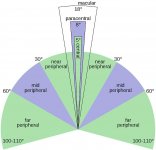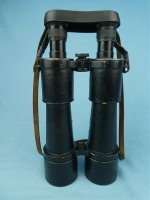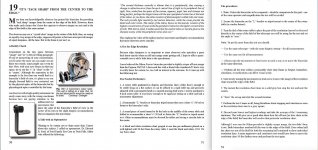I was specifically commenting this line:
"Similarly, the EL SV has also proven itself as a market leader both in it’s own right, and in terms of imitation
e.g. among other, Zeiss, Leica and Nikon have all offered flat field (and open bridge area) designs"
Ofcourse the combination of axle-less and central focusing is introduced with the EL in 1999, but not the open bridge.
Other "marketing" I would like to point out:
1. "The term Swarovision was used to describe a set of features:
- most notably, a flattened field of view
- use of HD glass in the objectives *
- longer eye relief, and
- improved image colour and transmission"
It seems like Nikon should have marketed their LXL line as "swarovision" before the word even existed.
And besides the field flattening, the swarovision still didn't top e.g. a Zeiss FL in terms of HD glass, eye relief and transmission (it was 5 years too late for that).
2. "And in 2020 the NL has arrived. While there is a variety of new detail, what’s most notable are:
- the EL SV pattern optics have been redesigned to provide a class leading field of view (an increase on those of the x42 Zeiss SF’s)"
It's like saying that after Roger Federer topped the tennis rankings for 2 decades and claiming that Djokovic is suddenly class leading because he is topping the ranks for a week. Swarovski had never really cared about FOV and I never heard any raving (or critique on Swarovski) when other makers had wider FOV. The general consensus between Swaro fans was always that they 'would rather have a sharp FOV until the edge than anything that is wide and gets more blurry'. I personally welcome wide FOV but it seems many are raving about it now, only because Swarovski is putting emphasis on it.
3. "And again while not apparent to users, the design will necessarily include a new and complex focus mechanism"
Why do you think this? Because of the narrowed center of the body? One thing you could say about the EL/swarovision complex focusing mechanism is not trying to market is as something wonderful, but rather something that made focusing in the EL / Swarovision slow. As Zeiss showed with the SF, you can make it a fast focuser but for some reason Swaro made it focus slow. So actually, that complex focuser of Swaro was, imho, subpar in most aspects. I wonder now (and have read it here, I think Jan Van Daalen wrote it) that the NL will have a faster focuser. So effectively, they now have produced a faster focusing, wide FOV binocular. Not exactly leading the way as others have done it before (Zeiss SF, that is).
4. "The EL was a radical departure from anything else available. The physical design provided holding options not previously available in CF binoculars"
While there are some more options to hold in theory, in practice I find it personally a gimmick.
5. "Similarly, the EL SV has also proven itself as a market leader both in it’s own right, and in terms of imitation
e.g. among other, Zeiss, Leica and Nikon have all offered flat field (and open bridge area) designs"
Nikon SE does not agree regarding the flat field.
Don't get me wrong, I like improvements in binoculars, and Swarovski is the market leader for reasons of combining attractive design, quality among the best and exceptional customer service, but your text reads as giving it too much credit for being a kind of innovator. In my view, they are more like Apple: they combine existing inventions into sleek, attractive products that are also expensive.
If making the analogy with cars: The NL is probably the first binocular from Swarovski that gets me a bit excited because I like what is under the hood. The EL had nice bodywork but a standard engine. A bit like a Mercedes B-class that people buy to get a Mercedes, but most don't know it has engines delivered by Renault. Nothing wrong with that but nothing special either.
The Swarovision had the same nice bodywork and nice comfortable seats. A bit like a Volvo: a very nice car but it still didn't win any race.
The NL finally has some impressive features under the hood, but unlike a true agile racecar, they built it too heavy.
So unless that wide FOV is superimpressive and I could handle the extra weight, I would probably look into lighter (8x32) binoculars that punch above their weight. The most attractive option in the NL line looks to be the 12x42 because you have that extra 2x combined with a comfortable FOV.











